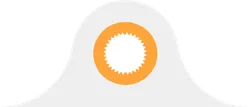Ambrose Solar Blog

Solar Panel Maintenance and Cleaning: Why It Matters & How Ambrose Solar Safeguards Your Investment
10 Easy Eco-Friendly Daily Routines to Reduce Your Carbon Footprint (California Guide) Living a more
When the Power Goes Out, Peace of Mind Shouldn’t If you’re in American Canyon or
6 Essential Tips for Solar Panel Maintenance Solar panel maintenance is the key to keeping
☀️ 5 Hidden Benefits of Going Solar Beyond Savings When most homeowners think about solar
Why Solar and Battery Backup Systems Are Essential for California Homeowners Understanding the Issue: PG&E
When deciding which solar panels are right for your home, there’s more to consider than
In the past, there was only one answer to the question, “What’s the best direction
A growing number of people are eager to learn more about solar energy and find out what
More than 380,000 homeowners have already turned to SunPower solar solutions. For the many others
It may seem obvious to say, but not all solar cells are the same. From
Renewable energy sources are by definition constantly replenished. Fossil fuels like coal or gasoline burn
A well-designed solar system can meet the majority of the electricity needs for a homeowner,
When it comes to purchasing a home, one of the first things most buyers look

